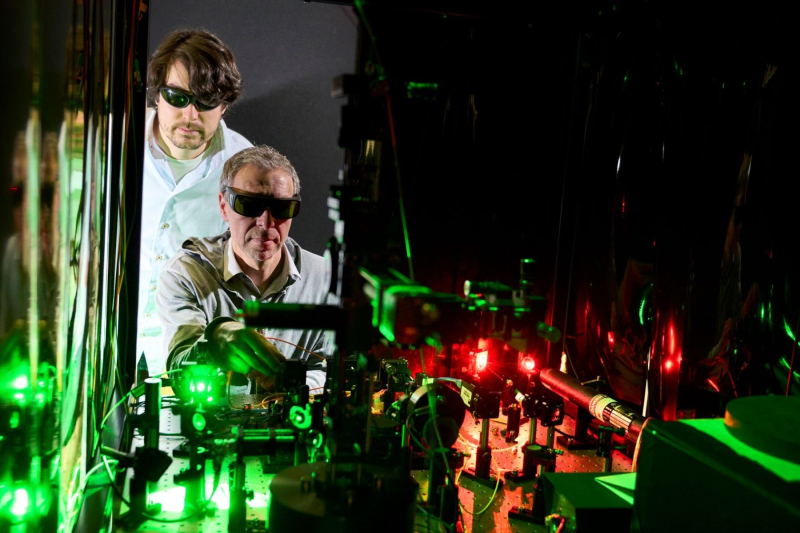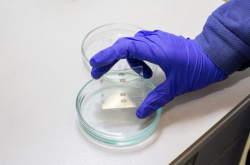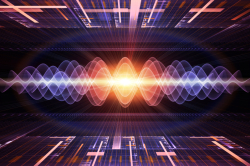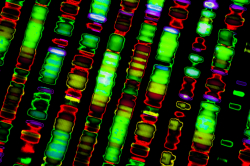Two-dimensional materials (materials that are only a few atoms thick) have been extensively experimentally studied. Their discovered properties, such as superconductivity in 2D graphene or 2D excitons in transition metal dichalcogenides, have the potential of bringing about not only new optoelectronic devices, but also quantum technologies. Excitons are quasiparticles that contain an electron rotating around an electron hole. These particles are generated in semiconductors during light absorption – and are converted back into light.
As of now, two-dimensional structures are yet to be used in electronic devices because they are hard to produce even in laboratory conditions due to excitons’ sensitivity to defects. The existing approaches are incapable of producing a defect-less, perfect structure.
Recently, the so-called moiré effect in heterostructures has been getting a lot of scientific attention. The effect is based on combining two layers of material with different chemical compositions; when placed at a certain angle, these layers form a lattice-like pattern. Excitons appear on the stripes of this lattice.
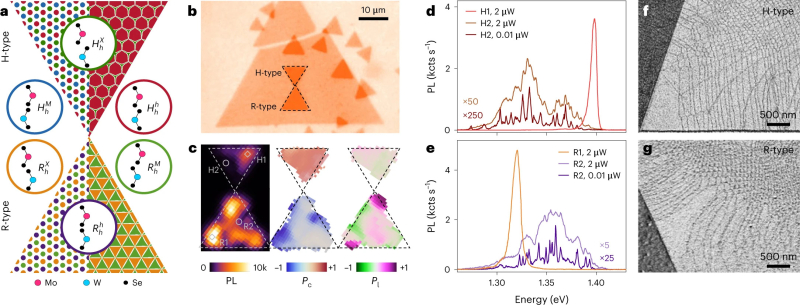
Features of HBL MoSe2-WSe2 in H- and R-type heterostacks. Illustration from the article / Nature Nanotechnology
One such moiré structure, made from two layers of molybdenum and tungsten dichalcogenides, was extensively analyzed by scientists from Ludwig Maximilian University of Munich and ITMO's Center of Optical Information Technologies. The structure itself wasn’t exfoliated from a larger crystal; instead, it was grown using сhemical vapor deposition, producing a sample that immediately possessed the required shape. In total, the researchers studied 10 samples with different patterns, finally selecting the one that makes it possible to look at two possible stackings with different symmetry of exciton states.
“The main finding of our study is that, using the sample, we considered not local effects but the whole picture; thus, we were able to acquire two types of lattices. The lattice consists of oriented triangles (rotated at the angles of 0 and 60 degrees) and each of the triangles contains its own exciton state. We were able to consider two types of structures at the same time and, most importantly, compare them,” explains Anvar Baimuratov, one of the paper’s authors, a researcher from the Ludwig Maximilian University of Munich.
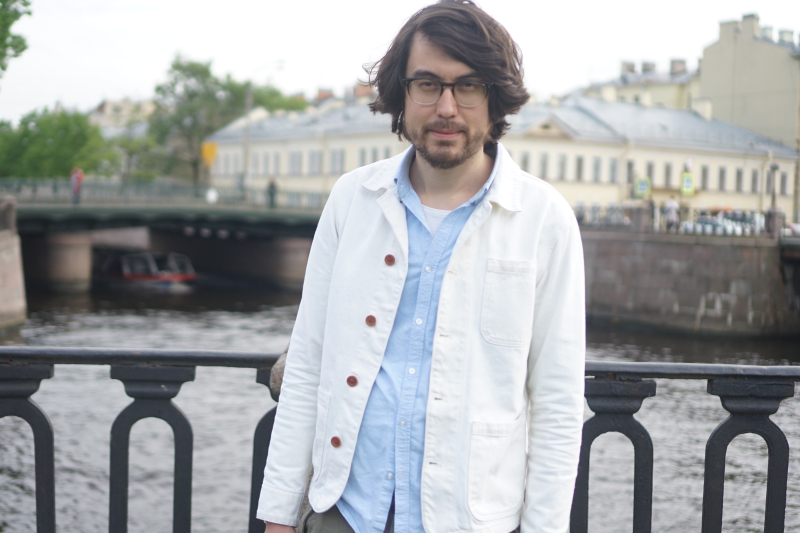
Anvar Baimuratov. Photo courtesy of the subject
The scientist also adds that even though it is impossible to produce a perfect sample with a strictly periodic pattern, the collaborators were able to create a sample where the exciton excitation areas repeat with a certain periodicity. Excitons are concentrated in these areas, which are stripe-like in appearance – the researchers refer to them as quantum wires. Next on the agenda is the task of controlling the quantum wire landscape so that the electrons can only move along them. Achieving this will be a step towards developing next-gen microchips and optoelectronic devices that will rely on excitons for computing and data storage. Such devices will be capable of more efficient information transfer and larger storage capacity – all with a smaller size than their conventional counterparts. Given that moiré structures can be easily scaled without losing their properties, they can potentially be used in quantum computers.
Reference: Shen Zhao, Zhijie Li, Xin Huang, Anna Rupp, Jonas Göser, Ilia A. Vovk, Stanislav Yu. Kruchinin, Kenji Watanabe, Takashi Taniguchi, Ismail Bilgin, Anvar S. Baimuratov & Alexander Högele, Excitons in mesoscopically reconstructed moiré heterostructures. Nature Nanotechnology, 2023.
